|
"Parkinson's and Alzheimer's disease are now the two
most common neurodegenerative disorders. They develop after
a progressive death of many neurons in the brain. Although
therapies are available to treat the signs and symptoms
of both diseases, the progression of neuronal death remains
relentless, and it has proved difficult to slow or stop.
Hence, there is a need to develop neuroprotective or disease-modifying
treatments that stabilize this degeneration. Red to infrared
light therapy (? = 600–1070 nm), and in particular
light in the near infrared (NIr) range, is emerging as
a safe and effective therapy that is capable of arresting
neuronal death. Previous studies have used NIr to treat
tissue stressed by hypoxia, toxic insult, genetic mutation
and mitochondrial dysfunction with much success. " Source

Neurodegeneration refers to a progressive death of neurons,
by either genetic environmental or currently unknown factors.
It includes a range of disorders, with the two most common
being Alzheimer's and Parkinson's disease. Over time, as
more and more neurons die, the signs and symptoms associated
with each disorder worsen, making many routine day-day
activities increasingly more difficult for patients (Tierney
et al., 2013; Schapira et al., 2014; Brettschneider et
al., 2015; Coppedè and Migliore, 2015; Goedert,
2015; Herrup, 2015; Nelson and Tabet, 2015
Alzheimer's Disease
Alzheimer's disease is the name given to an age-related,
insidious-onset, progressive dementia. Individuals suffer
progressive memory and cognitive decline and an overall
loss of executive function (Herrup, 2015; Nelson and Tabet,
2015).
Parkinson's Disease
The clinical syndrome and neuropathology of Parkinson's
disease are very different to Alzheimer's disease. Parkinson's
patients have predominately motor signs, including resting
tremor, lead-pipe rigidity, akinesia, and/or bradykinesia
(Bergman and Deuschl, 2002; Jankovic and Poewe, 2012).
Mainly due to the existence of effective toxin-based in
vitro and in vivo models, there have been considerably
more reports on the beneficial effects of NIr near-infrared
for Parkinson's disease.
"The application of red to near-infrared (LED) light
(k=600–1070
nm) to body tissues, known also as photobio-modulation
(PBM), has been used to treat many neurological conditions
in humans, including Parkinson’s disease,
Alzheimer’s
disease, depression, traumatic brain inju-ry, age-related
macular degeneration, stroke, and lower back pain.
In each of these explorations, as in all those involving
experimental
animals, PBM leads to bene-ficial outcomes, including
improved cognition, mood, sight,memory, and movement.A
key feature of PBM" Source
"In 2016, there was an international consensus
to change the terminology away from LLLT and the
old term “low-level,” and instead use
the new term “photobiomodulation” The
reasons for this decision were several-fold: (1)
Nobody had any idea exactly what “low-level” actually
meant; (2) the term laser was inappropriate as LEDs
are rapidly taking over"
"For much of this time, lasers were thought
to have special biological properties due to their
coherence and monochromaticity 6, and the field
was sometimes called “laser biostimulation” 7.
However, in recent years, it has become clear that
noncoherent light-emitting diodes (LEDs) perform
equally to medical lasers, with the added advantage
of being much less expensive and having fewer safety
concerns"
"Photobiomodulation (PBM) involves the use of
red or near-infrared light at low power densities
to
produce a beneficial effect on cells or tissues.
PBM therapy
is used to reduce pain, inflammation, edema, and
to regenerate damaged tissues such as wounds, bones,
and
tendons."
Source |
Can Transcranial
red light improve Parkinson’s
disease symptoms?
"Parkinson’s disease is a neurological disorder
with distinct signs of resting tremor, akinesia and/or
lead-pipe
rigidity, together with non-motor symptoms of impaired smell,
cognition and autonomic function. These manifest after a
major degeneration of neurones mainly within the brainstem,(Johnstone
et al., 2016; Mitro-fanis, 2017)
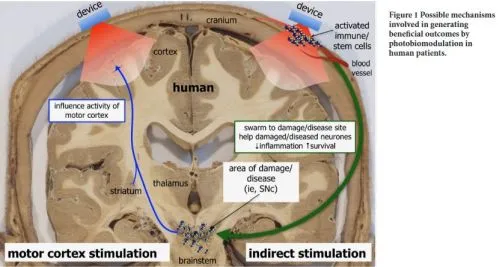
What Would be the Advantages of Using NIr Therapy?
"There would be several key advantages for the use of
NIr therapy over current treatments for both Alzheimer's
and
Parkinson's disease. First and foremost, NIr has the potential
to be neuroprotective. A growing body of pre-clinical evidence
indicates that NIr therapy slows or stops disease pathology
(Liang et al., 2008; Ying et al., 2008; Shaw et al., 2010;
Peoples et al., 2012; Moro et al., 2013; Purushothuman
et al., 2013, 2014, 2015; Johnstone et al., 2014b; El Massri
et al., 2015; Reinhart et al., 2015a,b)"
A number of recent studies have shown that photobiomodulation,
the use of red to infrared light (? = 600–1070 nm)
on body tissues, has beneficial effects in many animal models
of Parkinson’s disease, from flies to monkeys (Hamblin,
2016; Johnstone et al., 2016; Mitrofanis, 2017).
Sydney clinical trial
Twelve people in South Australia volunteered to participate
in a study on the effect of near-infrared light on
people with Parkinson’s disease.
Dr Liebert’s conclusions thus far
While we have to wait for the final and very detailed
results, Dr Liebert concluded her presentation
saying that:
Use of red and near-infrared lights is showing
itself to be a safe treatment.
Evidence from this and other studies shows that
red and near-infrared light improves a range of
motor and non-motor Parkinson’s disease symptoms.
The use of red and near infrared lights should be considered an adjunct to
medication and exercise programs for people with Parkinson’s disease. |
Red
and near infrared and the production of mesenchymal
stem cells, MSCs.
These benefits include, a restoration of the abnormal neu-ronal
activity in the basal ganglia, an improvement in loco-motive
behaviour and reduction in clinical signs, as well as an
increase in the survival patterns of neurones damaged by
either the parkinsonian toxin or the genetic mutation of
the model used.
As it stands, there are early indications that photobio-modulation
has beneficial effects on Parkinson’s disease pa-tients.
Several clinical case reports have used a transcranial approach,
with either a hand-held laser or light emitting device (LED)
or a helmet lined with many LED strips cov-ering the bulk
of the head
There is a clinical report indicating improved speech, cognition,
freezing episodes and gait in eight parkinsonian patients
after a two week application of photobiomodulation across
the head (Maloney et al., 2010)
MH, a 61-year-old male, was diagnosed 6 years previ-ously.
His major signs and symptoms included: restingtremor,
impaired fine motor skills and facial movement, gaitchange
(reduced stride), fatigue, apathy, difficulty main-taining
thoughts, low self-esteem, hesitant speech, andtrouble
sleeping. His daily medications included levodopa/carbidopa.Three
and half years after diagnosis, MH started using a670
and 810 nm LED bucket (redlightsonthebrain.blog). Hisexposure
time was 10 min for each wavelength twice daily(Table
1). After a month, MH reported that he had resumedhis
usual activities, was more confident, socially interactive,and
could think more clearly. Over the next few months,improvements
in his sleep, speech, and gait became evi-dent, together
with his face being more animated. Further,MH reported
that he had much more energy and reducedtremor. Over
the next 2 years, these improvements havebeen maintained
and he enjoys an active lifestyle. About12 months previously,
he developed dystonia in this rightfoot, together with
a sleep disturbance (dream enactment).These have not
however, deteriorated any further over thelast 12 months.
His fine motor skills have improved also; herecently
resumed being able to tie a fly onto a fishing lineand
he now requires little help doing up his shirt buttons. Source Read
more case studies here |
In addition, from a study of thirty six patients, photobiomod-ulation
from an intranasal device resulted in improvements in the
majority of parkinsonian signs (~90%) after treatment for
thirty minutes per day for ten days (Zhao et al., 2003).
photobiomodulation has been shown to influence immune and
stem cell function in experimental animals (Muili et al.,
2012; Oron and Oron, 2016)
Why
and how does light therapy offer neuroprotection in Parkinson’s
disease?
The “hard” scientific evidence that photobiomodu-lation
does indeed change neuronal activity and influence neuronal
survival against insult has become irrefutable (Hamblin,
2016). Source
Of the initial signs and symptoms, including tremor, akinesia,
gait, difficulty in swallowing and speech, less facial animation
and reduced fine motor skills, smell and social confidence,
~75% showed overall improvement, ~25% stayed the same and
none got worse. For the majority of these signs and symptoms,
changes were assessed by either the patient themselves, their
carers or their attending medical practitioners.
Turning On Lights to Stop Neurodegeneration: The Potential
of Near Infrared Light Therapy in Alzheimer's and Parkinson's
Disease
The penetration of light into the human body varies.
Light at the Red end of the color spectrum penetrates
deeper than light at the Blue end of the spectrum. NASA
reported on their research using NASA
LEDs commenting that,“
wavelengths of 630–800 nm [red and NIR] travel approximately
23 cm [approx. 9”] through the skin surface
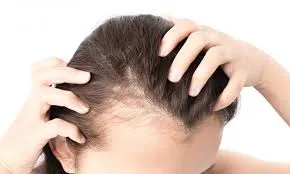
The growth of human scalp hair in females using visible
red light laser and LED sources
Forty-seven females (18–60 years old, Fitzpatrick
I–IV, and Ludwig–Savin Baldness Scale I-2, I-3,
I-4, II-1, II-2 baldness patterns) were recruited. A transition
zone scalp site was selected; hairs were trimmed to 3?mm
height; the area was tattooed and photographed. The active
group received a unit containing
diode lasers and 30 LEDS
Conclusions
LLLT of the scalp at 655nm significantly improved hair
counts in women with androgenetic alopecia at a rate similar
to that observed in males using the same parameters.

Skin issues
"Red light therapy aims to solve skin issues by using
low wavelength red light. Many experts believe that it can
help with issues such as skin conditions, scarring, and signs
of aging — including wrinkles and age spots.As a study
in the journal Seminars in Cutaneous Medicine and Surgery
notes, mitochondria in the skin cells can absorb these light
particles. This can help the cells produce more adenosine
triphosphate, which is the energy source for cells. Many
experts attribute the potential positive benefits to this
function. With this extra energy, the cells may be able to
respond better to damage and rejuvenate themselves"
It will stimulate the re-growth of collagen. Collagen is
an essential protein used to repair damaged tissue and replace
old tissue.
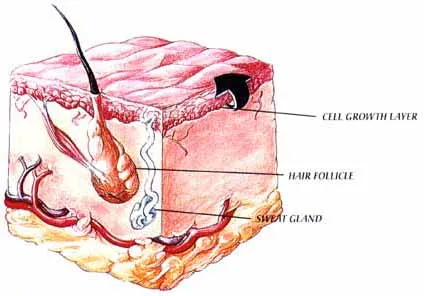
"Wound
healing It has
been found that infrared light releases nitrous oxide
in the blood stream which increases the
circulation of blood in the area where the light is
directed. This is very helpful for people, who due
to various diseases such as Diabetes find it very difficult
to heal wounds on the surface of the skin. This is
also helpful for patients suffering with Neuropathy,
Ulcers and for patients whose blood circulation is
improper.
" Red
light may also be helpful in speeding up wound healing.
Research in the journal Anais
Brasileiros de Dermatologia highlights
the fact that light therapy may help wound healing
in a few ways, such as by:
reducing inflammation in the cells "
The use of red light in skin treatment,treats
deeper pores. Red light can travel further
into the skin than blue light. It can also generate heat
at the level of the sebaceous glands,it can shrink the
glands and reduce sebum production. Source

Reducing pain A review in
the European
Journal of Physical and Rehabilitation Medicine compiled the results of many studies surrounding RLT
and musculoskeletal disorders.
Alopecia A study in the Journal
of Cosmetic and Laser Therapy explored
the effect of light on people with alopecia.
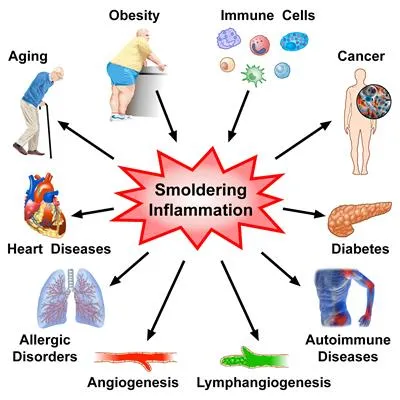
Anti-inflammatory benefits As research in the journal AIMS
Biophysics notes, many of the conditions that RLT
treats have their roots in inflammation.
Is NIr Therapy Safe?
To date, there are no reports of major safety issues nor
side-effects after NIr treatment. The commercial LED panels
for NIr therapy have already received non-significant risk
status by the Food and Drug Administration and previous studies
have indicated no adverse impact on brain tissue structure
and function after NIr treatment (power range from ~1 to
700 mW/cm2; Desmet et al., 2006; Hamblin and Demidova, 2006;
Ilic et al., 2006; Zivin et al., 2009; McCarthy et al., 2010;
Naeser et al., 2011, 2014; Rojas and Gonzalez-Lima, 2011;
Chung et al., 2012; Tata and Waynant, 2012; Quirk et al.,
2012a,b; Moro et al., 2014)
Parkinsons Rife Machine Frequencies
These are not just LED's they are Deep penetrating LASERS
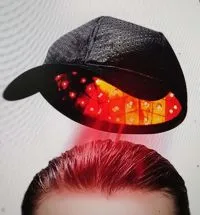 |
Laser Beam
Cap
92 Beam Laser Cap
Alzheimer's
and Parkinson's.
Wound healing
Neurodegeneration
Skalp and Skin issues
Anti-inflammatory
benefits
Red and near infrared and the production of mesenchymal
stem cells, MSCs
Instructions
Skype backup
More information |
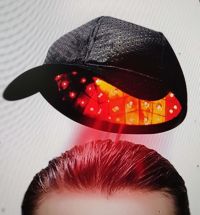
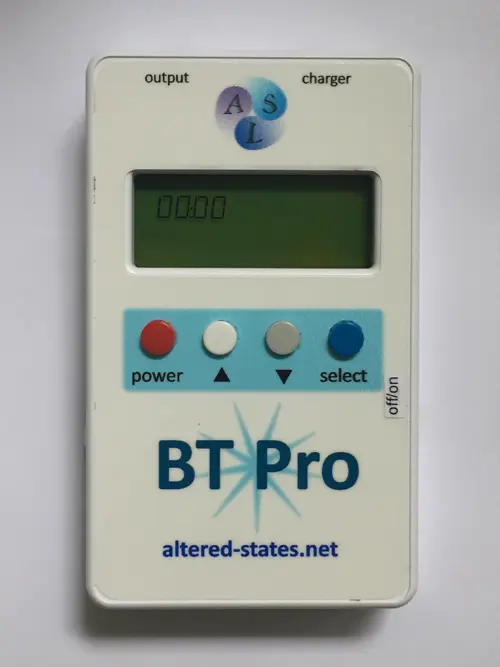
|
92
Beam Laser Cap
for BT Pro
Pulse your Laser cap with the Built
in BTPro frequencies
92 Beam Laser Cap
Alzheimer's and Parkinson's .
Wound healing
Neurodegeneration
Skalp and Skin issues
Anti-inflammatory benefits
Red and near infrared and the production of mesenchymal stem cells, MSCs
Instructions
Skype backup
More
information
More BTPro options
|
Some Published Rife Frequencies
These frequencies can be added to your Rife Machine and
saved on its hard drive
Rife machine frequencies :Parkinson's disease (a slowly
progressive, degenerative,
neurologic disorder): 813
Rife machine frequencies Parkinson Disease: 0.08, 0.35,
0.65, 0.83, 9.50, 115.71, 255.83, 485.43, , 644, 692.50,
813, 825. 978.05. 986, 6000Hz
Rife machine frequencies Parkinsonian Disorders: 0.57,
0.78, 0.90, 5.25, 7.00, 115.71, 255.83, 485.43, 692.50,
813, 825.Hz
Rife machine frequencies Wolff-Parkinson-White Syndrome:
0.08, 0.55, 7.50, 8.00, 12.33, 96.50, 175.16, 410.25, 642.91,
978.05
Rife machine frequencies Mycoplasma fermentans (exp. May
be a factor in chronic fatigue, alzheimer's, parkinson's,
and MS) - 2900, 864, 790, 690, 610, 484, 986, 644, 254
Rife machine frequenciy 6000 - A master Central Nervous
System Frequency. Release of emotional problems, blocked
seizures - but does nothing once seizure starts, repoertedly
stopped tremors in hands in person with Parkinson's disease.
Rife machine frequencies for Parkinson tremor, temporary
relief - 6000 for 10 min, 130, 169
Rife machine frequencies for Parkinson's disease (a slowly
progressive, degenerative, neurologic disorder, also use
Chlamydia pneumoniae and see Nocardia asteroides freqs)
-693, 813, 1.1, 5000, 1131 for 3 min, 33 for 30 min

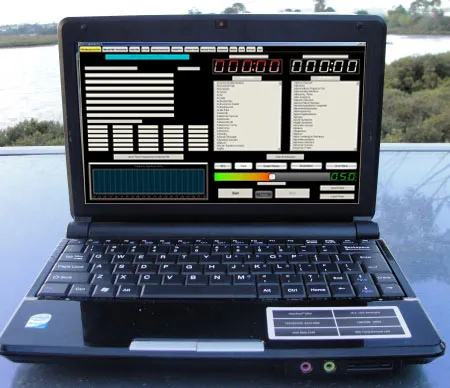
|
92 Beam Laser cap for the Rife Pro
Pulse your Rife Pro with Rife Frequencies
92 Beam Laser Cap
Alzheimer's and Parkinson's.
Wound healing
Neurodegeneration
Skalp and Skin issues
Anti-inflammatory benefits
Red and near infrared and the production of mesenchymal stem cells, MSCs
Instructions
Skype backup
Parkinsons
Rife Machine Frequencies
More
information |
Red Light Infrared LED Therapy cap
(Not as Deep penetration
as the Laser cap)
Red light therapy, also called photobiomodulation
or low-level light therapy, is the process of diffusing
concentrated wavelengths of natural light into the skin
to treat various ailments and conditions and to otherwise
improve the circulation and functioning of the cells.
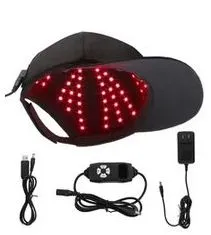 |
LED Cap Stand
Alone unit
100+LED’s (660nm and 850nm)USB powered (via
power outlet, computer or battery-bank)
brightness
settings
Adjustable time – constant, 5, 10, 15,
mins
Adjustable pulse mode – 660nm or 850nm or
both
Certification: FCC CE ROHS UKCA, Clinical grade
Adjustable
frequency – constant,or 10, Hz
Powerpack and
USB cables
Instructions
Instructions
Skype backup
More information |
| |
|
|
The LED Cap for the BTPro
Pulse your LED cap with your BT pro machine
Time Frequency,
Full frequency rage of the btpro
Pulse, Intensity,
all controllable from your BTPro
TMS Adapterfor the
BTPRO included
Powerpack and USB cables
Instructions
Instructions
Skype backup
More
information |
| |
|
|
The Latest LED Cap for the Rife Pro
all versions
Pulse your LED cap with our Rife pro machine,Full
frequency rage of the Rife Pro
Time Frequency, Pulse, Intensity, all controllable
from your Rife Pro
Powerpack and USB cables
Instructions
Instructions
Skype backup
More
information |
| |
|
Sources
Professor John Mitrofanis (University of Sydney) and Professor
Alim Louis Benabid (CEA-LETI Grenoble University) have been
research collaborators for some years now, investigating
the effects of near infrared light on the dopamine-producing
cells damaged by Parkinson’s Disease.
Based on the work of Dr
Frank Nicklason, Dr Catherine Hamilton, Prof John Mitrofanis,
Nabil el Massri and David
Hamilton.
Medical news today |

